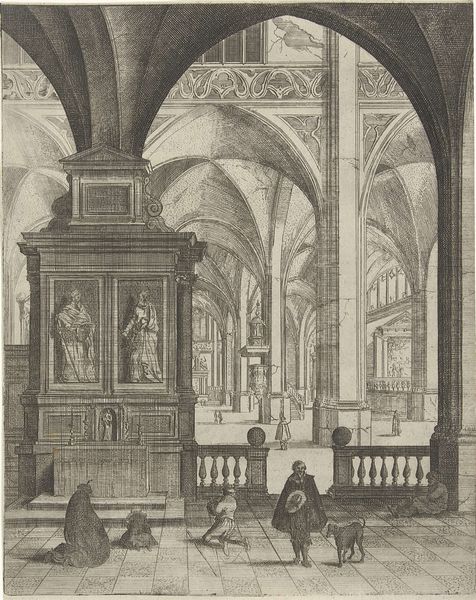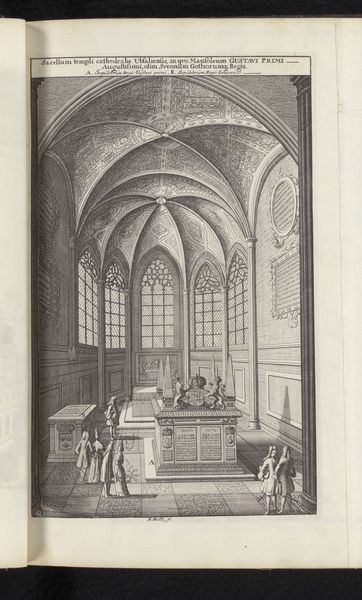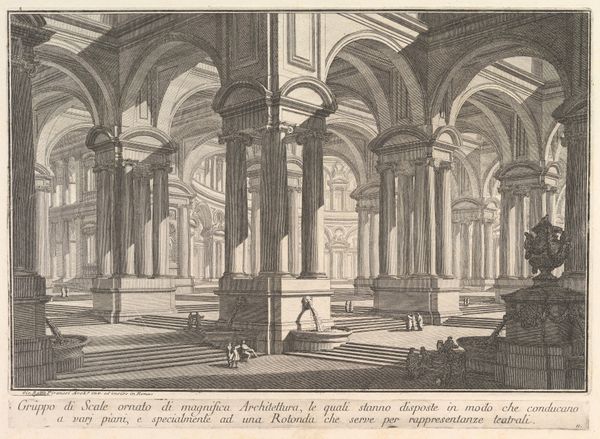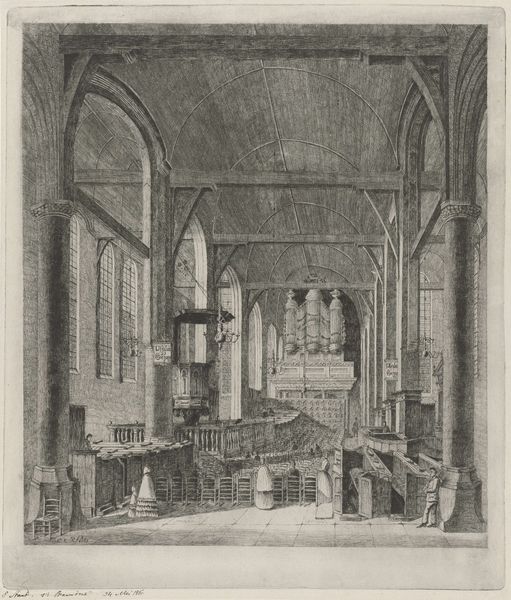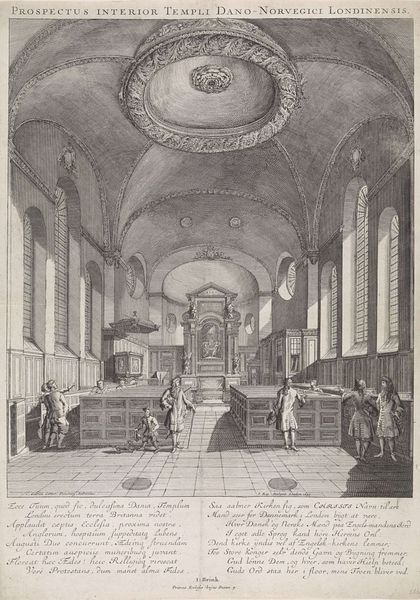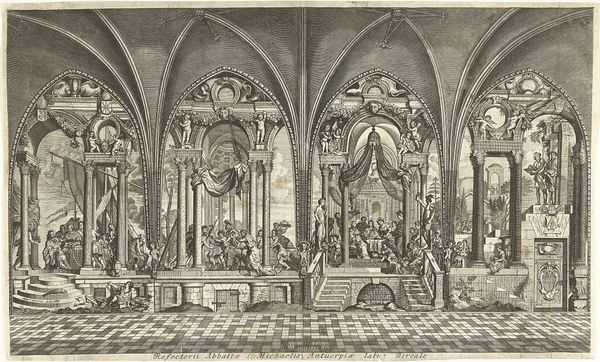
print, engraving, architecture
#
baroque
#
dutch-golden-age
# print
#
perspective
#
genre-painting
#
engraving
#
architecture
Dimensions: height 254 mm, width 217 mm
Copyright: Rijks Museum: Open Domain
Editor: Here we have Gerard Houckgeest’s "Kerkinterieur," created sometime between 1610 and 1645. It's an engraving depicting the interior of a church, rendered with amazing perspective. It has such an intimate, peaceful feeling despite its size and scale. How do you interpret this work through a material lens? Curator: This print offers a fascinating study in materiality, from the monumental architecture depicted to the tangible processes involved in its creation. The church itself signifies more than just a sacred space; it embodies the physical manifestation of faith, constructed by laborers and financed through complex systems of patronage and resource extraction. Consider the engraving process: the artisan carefully incising lines into a copper plate, mirroring the meticulous labor that erected the cathedral. Editor: So, you're saying the artistic process mirrors the building of the church itself? Curator: Precisely! And note the figures within the space – the various social classes represented highlight consumption patterns and the social dynamics played out within and around this architecture. Are they truly contemplating religious themes, or are they merely using the church as shelter, or as a safe and socially acceptable meeting place? Editor: That's an interesting point. I never considered the "genre painting" aspect and how daily life might have been accurately portrayed using engraving technology for a wider distribution and a mass audience. Curator: How does understanding the method and means by which the print was made affect your impression of its overall significance? Editor: Thinking about the labour involved, from the architect to the engraver, changes everything. It moves the artwork beyond just aesthetics to a product of many hands, of systems. Thanks for pointing that out. I'll never look at prints the same way! Curator: And that reframing shifts our focus toward how objects are both created and consumed within larger cultural contexts. It offers new appreciation.
Comments
No comments
Be the first to comment and join the conversation on the ultimate creative platform.
